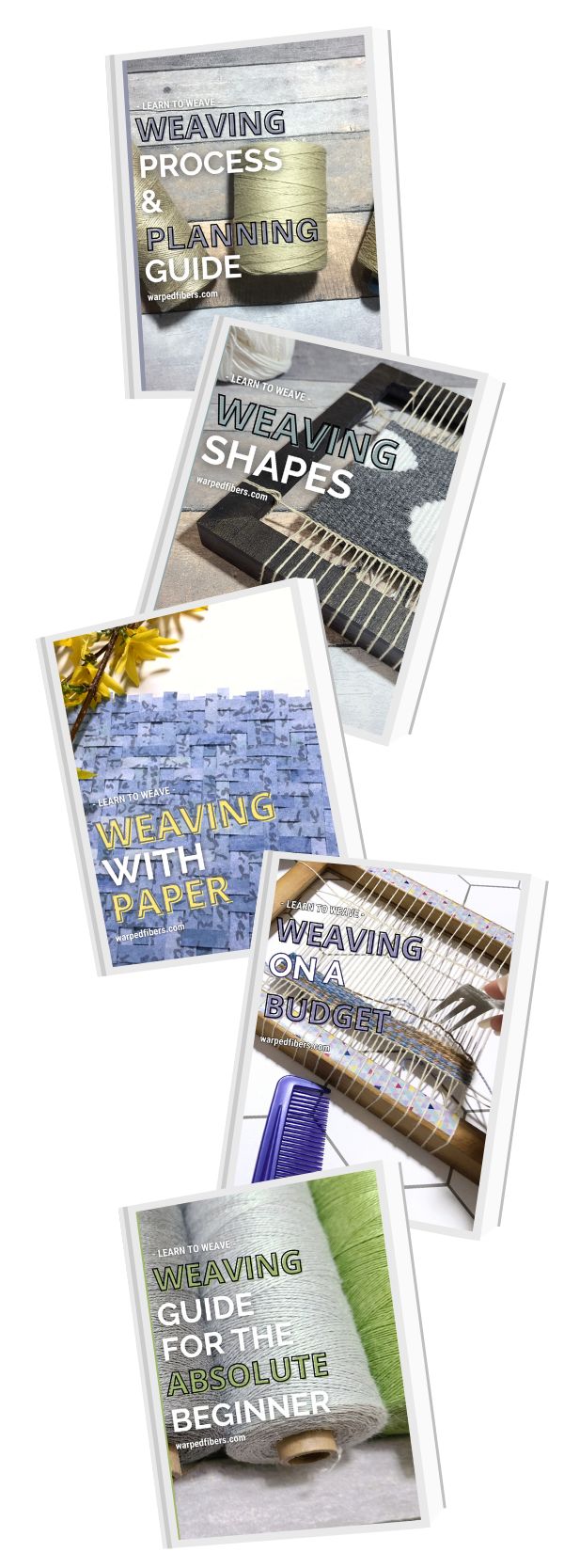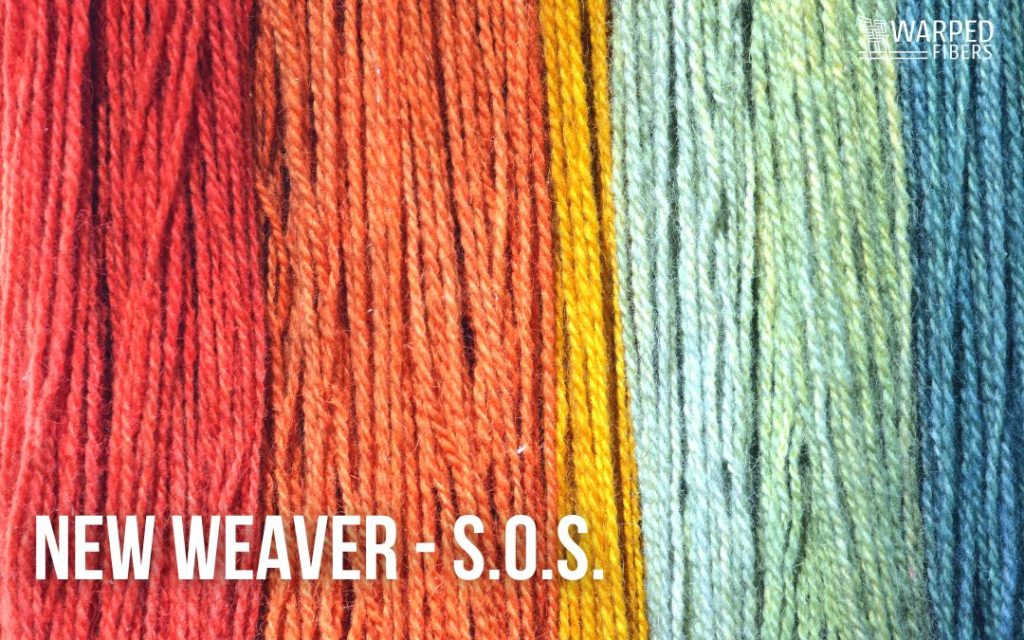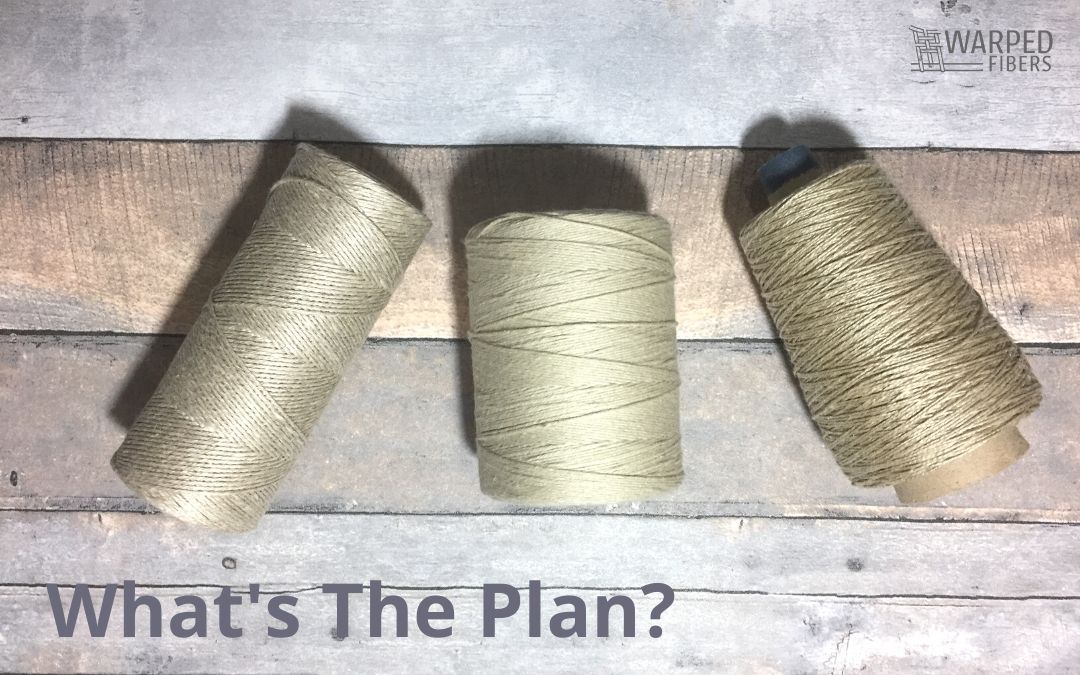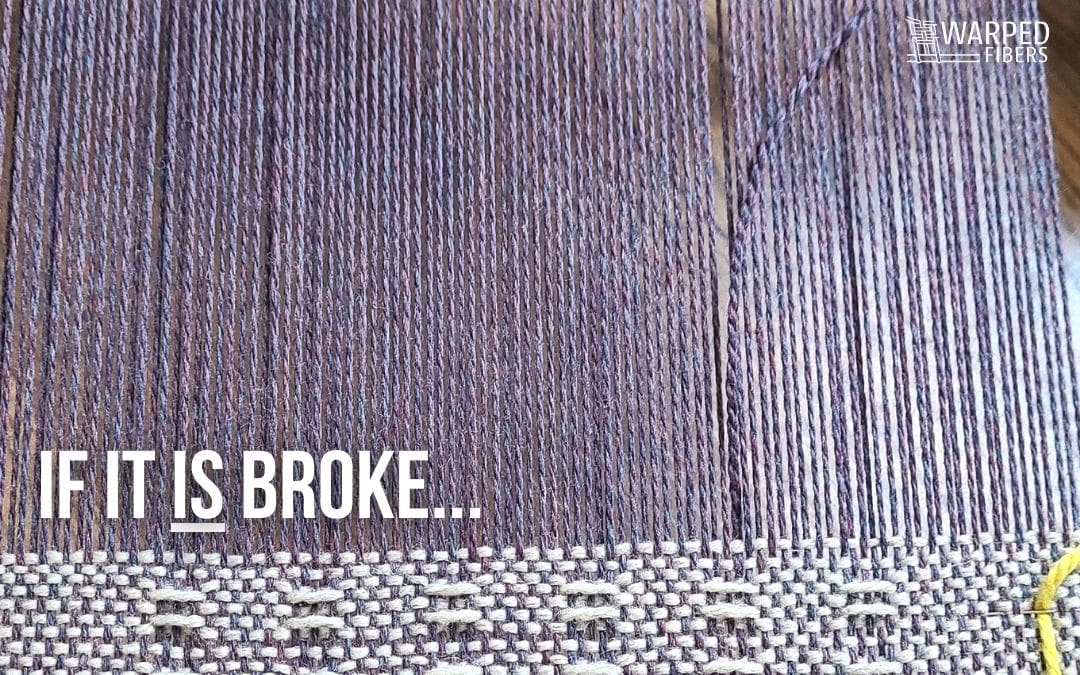I love plain weave.
Maybe that is a boring statement, but by the end of this post I think you will agree with me.
Plain weave is one of the most versatile weave structures that you can work with and can create anything from intricate tapestries to simple scarves.
Despite the fact that “plain” is in the name it doesn’t have to be a plain weaving. With only the use of different colors, you can make interesting and dynamic patterns without any special tools. The greatest thing about making patterns in plain weave is that you can easily create these patterns with a rigid heddle loom or a floor loom because your only requirement is to be able to weave over one and under one.
While plain weave isn’t always a balanced weave (tapestry is plain weave!) in order to create our color patterns we will be working with a balanced plain weave. We need to see equal amounts of warp and weft for these to work.
Plain weave patterns always work best when the colors are contrasting. This helps them to stand out and gives you the best result for your effort.
This page may contain affiliate links. If you purchase something through these links then I will receive a small commission – at no extra cost to you! Please read our DISCLAIMER for more info. Thanks for the support!
Stripes
Stripes are the simplest pattern that you can make with plain weave.
Just because they are simple, though, doesn’t mean they have to be boring. When it comes to your stripes you can weave both vertical and horizontal stripes with horizontal being the simplest.
Horizontal stripes only require you to change your weft yarn colors periodically. To make them more dynamic you can change the size of your vertical stripes in many different ways. Try creating thicker stripes that lead to thinner ones or alternating thing and thick for another fun option.
Vertical stripes can take a little longer to set up because you have to warp your loom with different colors. This isn’t hard to do but may require a little extra time to measure out and a little more thought to set up. Once they are warped, though, you with be weaving only one color weft and should be able to do that relatively quickly. Similar to horizontal stripes you can vary the sizes to keep things interesting!
Once you start combining warp and weft stripes you start to get into plaid territory.
Plaid
Plaids are a combination of vertical and horizontal stripes. Most of the time you will be varying the size of the stripes to create more interesting patterns. You would do this by having different quantities of your colored warp or weft yarns.
If your horizontal and vertical stripes are all consistently the same size then you will be getting a gingham check pattern instead of a plaid. (Also a great pattern, though!)
A lot of times you will want a variety of big and small stripes in both the warp and weft. They also often contain more than 2 colors in order to create your more intricate patterns.
There are many different types of plaid patterns so play around with your warp and weft to create something that you like!
Houndstooth
When it comes to houndstooth there is simple and complicated.
For the purpose of using only plain weave we are going the simple houndstooth route. Just because it is simple, though, doesn’t mean it is less than.
This simple houndstooth pattern is created by warping two colors in two warp increments and weaving two picks of each color before switching. It is basically just stripes of color that offset each other to create our houndstooth pattern!
If you are interested in weaving up a houndstooth scarf then make sure to check out my free houndstooth stripe scarf pattern that you can find on the Warped Community page! Once you join the Warped community you get access to all of the free stuff (patterns, a free course, and more) plus discounts on future ebooks and a weaving tip in a quarterly email. If you love to weave – we would love to have you!
Log cabin
The log cabin plain weave pattern is another really fun and interesting pattern you can play with.
To create your log cabin pattern you will be alternating two colors of warp and weft one pick at a time.
For example if you are working with grey and blue then your warp will go 1 grey, 1 blue, 1 grey, 1 blue and so on.
The weft would do the same thing: 1 grey, 1 blue, 1 grey, 1 blue. You would do this until you are ready to switch to create your alternating pattern. In that case you would do 2 picks of one of your colors and then continue with just 1 each.
If you have ever woven pick-and-pick in tapestry then this is basically the same pattern but in a balanced weave.
Create your own plain weave pattern sampler
If you are really interested in plain weave patterns then I highly recommend creating a sampler to try out all of your options. This will give you some experience with everything that is possible all at once.
Warp once whenever you can!
Plain Weave Color Patterns Sampler
10 EPI
96 Warp Ends
Total Warp Length: 2 or more yards
3/2 Cotton – 2 colors of differing values (A & B) I like this perle cotton.
Not sure about weaving with color? Check out the weaving color theory post HERE
Floor Loom Warping: Straight draw on 4 harnesses
Rigid Heddle Loom Warping: Plain weave with 1 heddle
Warp Pattern:
BBBB x24
AABB (Ax12, Bx12)
ABAB (Ax12, Bx12)
AAAB (Ax18, Bx6)
Weft Pattern:
2 inches of each:
B
A
BA
AB
BBAA
BBA
AAB
BBAAA
AABBB
BBBA
AAAB
AAABBB
BBBAA
Play around with any extra warp you have on your loom! Try out different combinations and make sure to write them down for easy reference in the future.
Finishing your sample:
Since this is a sampler you don’t have to do anything special to finish it off. The simplest thing you can do is to just tie off your warp to make sure it does not come undone. An overhand knot (check out my post on weaving knots) is a great and simple option for this.
If you want to finish off your weft tails then make sure to learn about that HERE.
Plain weave doesn’t have to be boring! Try out these simple color patterns to mix up your plain weave projects!
⇣ Love It? Share It! ⇣
You May Also Like
























is the houndstooth possible on a simple frame loom ?
Yes! You can weave pretty much anything on a simple frame loom.
It’s just a matter of putting your warp on in colored stripes (you will have to start and stop a lot, but totally doable) and weaving your weft as stripes as well!
Interesting. never thought to use different colors in the warp. How do I attach the warp threads?
I warp front to back so I just skip the dents that will hold the other colors and go back to fill them in. I’ve never had any issues with tangles even though it looks a bit like a tornado hit my loom – it always works out!